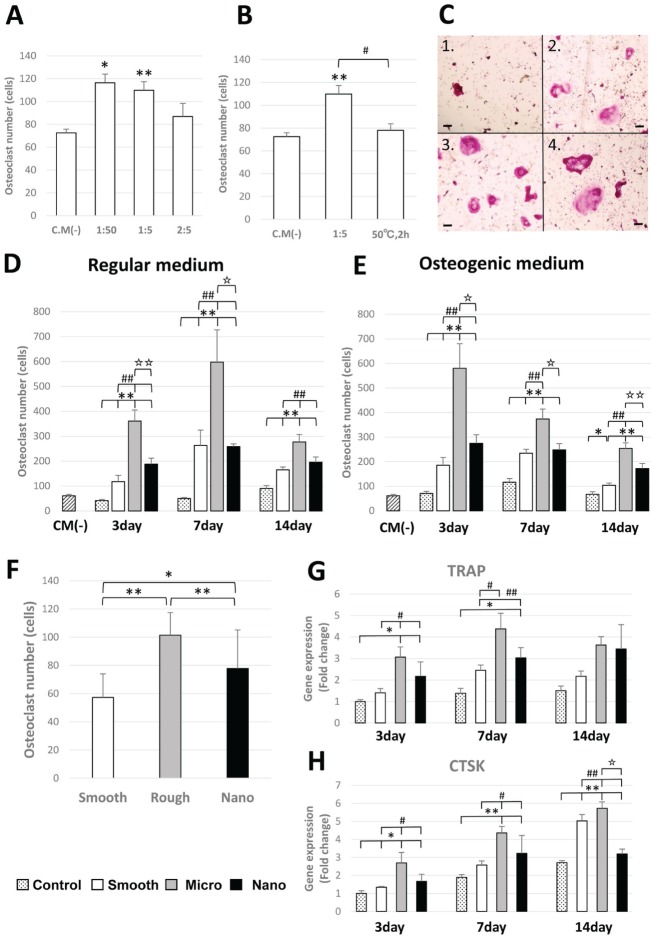Figure 3.
Osteoclast formation assay and bone marrow–derived macrophage gene expression. Tartrate-resistant acid phosphatase (TRAP)–positive cells with ≥3 nuclei were scored as osteoclasts by microscopic counts. All experiments were performed in triplicate (n = 7) for each condition. (A) Influence of different ratios of added conditioned media (CM) of bone marrow stromal cells (BMSCs). CM from BMSCs was cultured with regular medium (RM) for 1 d on smooth titanium plate. (B) The influence of heat-inactivated CM on osteoclast number. CM from BMSC was cultured with RM for 1 d on smooth titanium plate. (C) Osteoclast cultured with CM(–) (C1) and with M(+) from BMSCs cultured on microsurface for day 3 (C2), day 7 (C3), and day 14 (C4). Bar = 50 µm. (D, E) A 1:5 concentration of CM was used. The influence of surface topography on BMSCs cultured with RM or OM contribution to pro-osteoclastogenic factors in CM. (F) Osteoclast number formed from bone marrow isolated from tibia following placement of smooth, micro, and nano surface implants. (G, H) Gene expression of TRAP and cathepsin K (CTSK) in bone marrow–derived macrophages with CM from BMSCs cultured with RM. *P < 0.05. **P < 0.01. #P < 0.05. ##P < 0.01.

